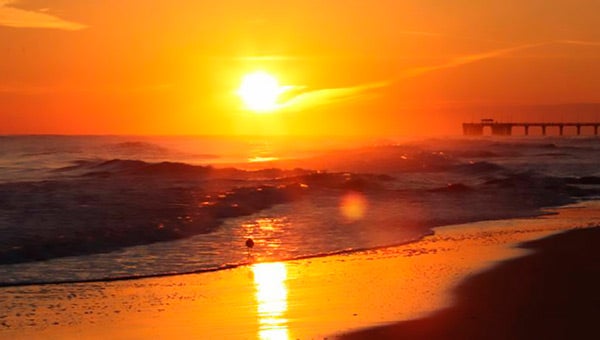Improvements under way at Gulf State Park
Published 12:58 am Tuesday, June 28, 2016
By RICK HARMON,
Alabama Tourism
Major developments at Gulf State Park that range from a beach environmental center to a 350-room lodge for family reunions are under construction and on schedule to open within two years, Gov. Robert Bentley announced Monday.
The project also creates miles of trails for biking and hiking and restoring sugary white sand dunes that would cover the equivalent of 50 football fields.
Bentley, who tasked the University of Alabama System and the Alabama Department of Conservation to work together on the $135 million project, said that the work won’t be funded through taxes but financed with funds that BP provided to restore the economy along the Gulf Coast after the 2010 oil spill.
Three of the projects are currently under construction: the dune restoration, the trails and trail enhancements, and the lodge and meeting space.
All five components will open by summer 2018 with the trails expected to open by spring 2017, he said.
The redevelopment is expected to be a huge boon to an already surging Gulf Coast economy.
The Gulf State Park project was one of the first Alabama projects approved by the Natural Resource Damage Assessment Trustee Council, which was set up to disperse BP money and includes representatives from four federal agencies and the five affected states. But some have protested the move, and filed lawsuits, saying the funds shouldn’t be used on Gulf State Park because it was damaged by Hurricane Ivan in 2004 rather than the oil spill.
Increasing tourism
The renovation includes $56 million to replace the park lodge. That will add 350 rooms and a 40,000 square-foot ballroom, the biggest on the Gulf Coast, which will create a major space for meetings.
“We know there is pent-up demand for additional meeting space on our coast,” said Herb Malone, president and CEO of the Gulf Shores and Orange Beach Tourism. “This should help meet that demand and bring in larger groups that may not have been able to hold their meetings or conventions here before.”
But Lee Sentell, director of state tourism, said the redeveloped park won’t just attract conventions. He expects it to become a major ecological tourist site.
Since 2003, the amount tourism has contributed to the general fund has more than doubled, going from $23 million to $47 million. In 2015, Alabama tourism created $12.6 billion in visitor spending, generating about $798 million in state and local taxes.
Malone said the redevelopment at Gulf State Park will only help Gulf Coast tourism, both as a premier ecological park and as a meeting space that will help the state get a larger share of convention business.
Preserving park’s ecosystems
Project spokeswomen Nisa Miranda said Gulf State Park is a unique asset to Alabama in that it contains eight distinct ecosystems and with both beach and forest ecologies inside a single park.
She said improving access to both ecologies will help attract tourists to the region even when it isn’t peak season for the coast. The renovation project consulted several internationally renowned experts who collaborated on developing the environmentally sensitive projects at the park.
One of the major ones is the dune project.
Jill Dixon is with Sasaki Associates, a firm of landscape architects that has worked on the master plan for the renovations, including work with the Volkert engineering firm responsible for the Dune Restoration Project.
“Our team, comprised of some of the nation’s foremost experts in their respective fields, will be using innovative techniques and native plantings to rebuild the equivalent of more than 50 football fields of dunes,” she said.
They have come up with a way to encourage the dunes to naturally form themselves, which will make them more resilient than man-made dunes.
Alabama’s coastal classroom
Miranda, who said cooperation between the state and the University of Alabama system on the project has been seamless, is also proud of another part of the renovation – making the park “Alabama’s coastal classroom.”
The renovations include: a learning campus, a new environmental research and education program that will include a center with classrooms, research facilities and even visitor dorms; a nature center within the campground where visitors can meet with the park’s naturalist to find out about the ecology and to take guided walks; and an interpretive center on the beach that will inspire families to take their own self-guided tours of the trails.
The trails also will be improved. There will be seven trails through six distinct ecosystems spanning 11.5 miles. The enhancement project will add 9.5 miles of new trails for hiking and biking.





